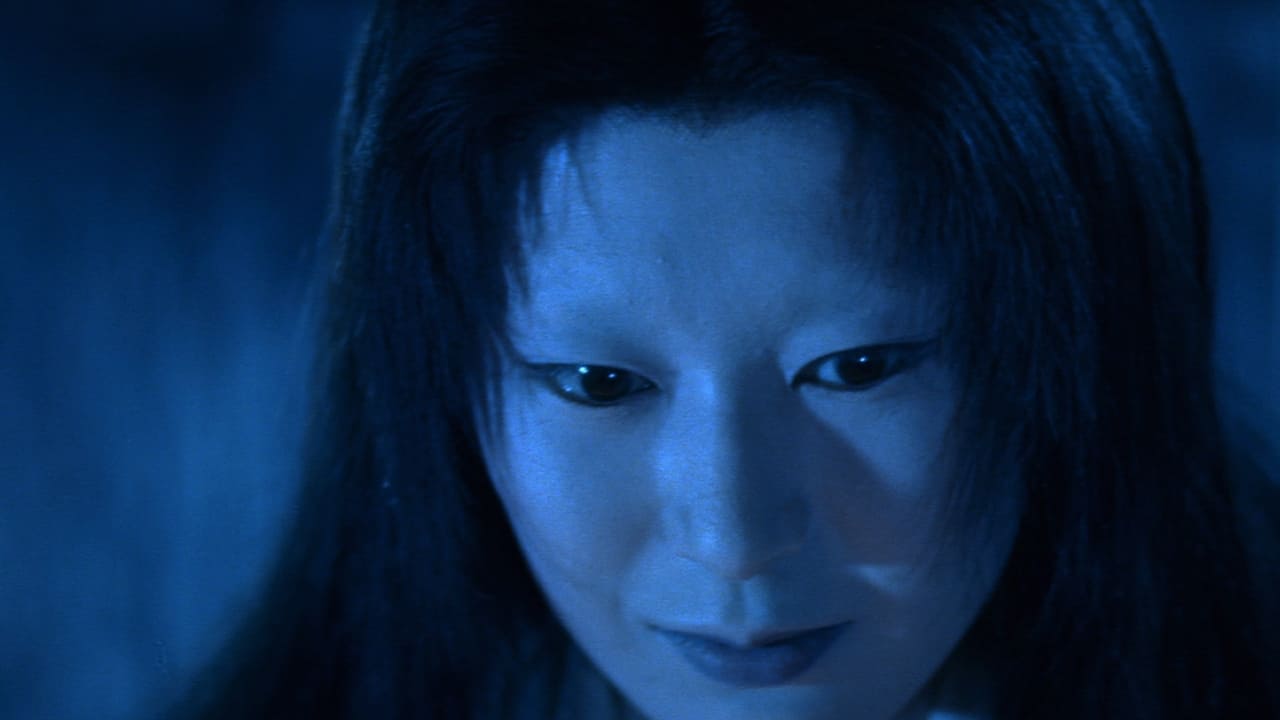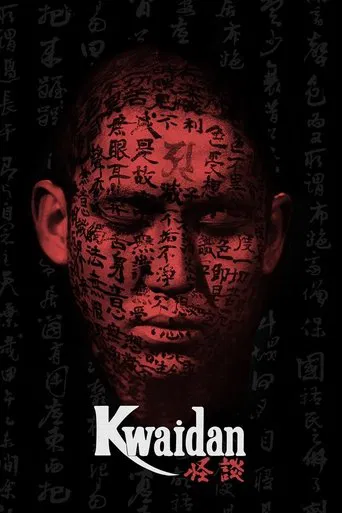

If you value visual style, good folk tales(of horror) and don't shy away from graphic scenes and unsettling themes, this movie needs to enter your watch list now! This collection of Japanese folk tales has been brought to life with sublime style! Everything from visuals, score, atmosphere and pacing is crafted stupendously to fit the story and maximize the impact each tale provides. I'd say the visuals alone are worth the watch, but the stories are also great! See for yourself, and be happy you didn't miss this gem!
... View MorePrior to 'Kwaidan', the only other Kobayashi films that I had seen are the masterpiece 'Harakiri' and the really good 'Samurai Rebellion'. Both these films had a very tangible anti-establishment vibe to them with a strong criticism of the rigid Japanese social structure. 'Kwaidan' on the other hand is very different. This is an anthology comprising of four Japanese supernatural folktales.Unlike the social commentary in his other films, 'Kwaidan' is more of an exercise in style. Not that the other films weren't stylish, but the formal elements in 'Kwaidan' are much more prominent. Every frame of the film has a sense of meticulousness. There is a surgical precision with which Kobayashi uses the camera movements, the lighting and the colour palette which very much reminded me of similar beautiful images in the films of Zhang Yimou. There is a clear attempt made to make the frames of the film resemble the medieval Japanese narrative scrolls as all the stories in the film involve the thematic element of the past making its presence felt in the present. The use of sound and music has to be particularly admired, because the sound design constantly breaks conventions of simulating realism and thereby helps the film to drift away from the realms of realism and shift to the realms of mysticism/spiritualism.Since, 'Kwaidan' is an anthology of short stories, it lacks the character development and emotional resonance that Harakiri achieves so devastatingly. But despite that, I think the sheer sensual beauty of 'Kwaidan' makes it an essential watch. This is a visual tour de force.
... View MoreFour ghost stories are told based on Japanese folklore.The Good Stor(ies): The Woman in the Snow-In the Musashi Province, two woodcutters manage to become trapped in the forest during a furious snowstorm. Coming upon a wooden shelter in the middle, they encounter a strange woman who immediately threatens them to leave. When he leaves and manages to marry years later and start a life together, he gradually begins to think she has something in common with the mystery woman. This was a flawed, but surely the best effort here. The atmosphere in the beginning through the forest is outstanding, as the howling wind and falling snow are an outstanding building block for a creepy setting, and with the continuous shots of eyes appearing in the sky are just unnerving. The scenes in the hut are just as good, chilling and creepy due to the presence of the figure as well as the blue filter which is a great fit. Though the revelation scene could've been great had the threat been capitalized on due to the earlier warning, the rest isn't as good. It's very talky rather than actually showing anything, and with the fact that it doesn't follow through on the threat makes it a big fail. As well, the early scenes with the eyes are terrible-looking and quite fake, appearing like the painting they really are while the forest itself looks exactly like the sound-stage set it is rather than a dense forest. However, the atmosphere here raises itself up.In a Cup of Tea-Visiting a temple, a lord is alarmed at seeing a stranger's ghostly face in every water bowl he tries, despite no one else being able to. That night, the ghost appears again but disappears before anyone else can find him. Desperate to find out his true intentions, he sends his guards to raid the area in an effort to find him, but all alone, he is able to discover the shocking reason for the supernatural visitations. While this one is indeed heavily talky at times and features a rather lame opening, this one picks up incredibly well. The tactic of appearing in the water bowl is ingenious, the dialogue is threatening with a hint of innocence behind them which manage to make it even more ominous, and then the ghostly-action is great. Appearing anywhere and everywhere, from behind objects and in the middle of rooms quite easily, being able to walk through walls and such similar ideas are fantastic and make them appear all the better. That we get some suspenseful parts through the guards' searches of the area is just great, and is mixed in nicely with some action in the form of some nice sword-fights. It just loses some points for the lame reasoning behind the visitations, which is quite obvious once it's revealed despite being set-up as a big shocking surprise before the reveal, and for its rather talky opening that plays like most of the others here.The Bad Stor(ies): The Black Hair-Dissatisfied by his lifestyle, a samurai divorces his poor wife and leaves the city, looking for a new home. Meeting a new wife, he continues to experience haunting visions of his first wife, getting to the point where he eventually returns to her, only for a drastic curse to affect them both. This was incredibly underwhelming, and is mainly used by its fairly lengthy and boring intro. As the two are involved in a rather beautiful love story, it's just not that interesting as a horror film. The scenes of the two talking about their relationship, as well as of his second wife, are just plain boring to watch, and with the series of completely silent sequences thrown in, it's a little bit of a downer. The skeleton reveal and the battle with the hair are first-rate, if somewhat tame scares, but because there's no explanation for anything, it ultimately suffers overall.Hoichi, The Earless-Living in a monastery, a blind musician finds himself sent to visit a nearby temple to meditate after acting up. While there, a samurai approaches and offers to take him to meet his master due to his reputation as a master teller of a famous battle between two samurai clans hundreds of years ago. As the others at the monastery worry about him going out at nights, he reluctantly tells of his experiences and finds something far more sinister going on at the temple. This one is such a mixed affair that it's nearly impossible to rate. That it opens with a protracted, high-energy sword fight that is a lot of fun through its choreography and tactics, as well as the violence, is tempered drastically due to the soundless action and cartoon images it throws in during the whole sequence which lasts a good half-hour. The middle is just a waste, featuring a solid build-up to a fantastic element brought up in the story but comes with no pay-off, and while the ending is violent and creepy for its insane images and concept, the muted soundtrack again hurts the effectiveness of this one. Only the trek through the rain-swept forest survives here, as the length, due to the opening battle, is the final fault in this one. Had it fixed a few problems and put some sound in a few times, it would've ranked higher.Rated R: Graphic Violence.
... View MoreKWAIDAN is a Japanese anthology of four ghost stories, each based on an original story by Lafcadio Hearn originally written at the turn of the 20th century (I've read some of those stories, and they're well worth checking out if you're a literature fan, by the way). The initial story explores the fate of a man who leaves his loving wife, only to end up regretting his decision. I found this story to be a bit overlong – there's only so long you can drag out something when nothing's happening – but lovely to look at and exceptionally spooky, along the same lines as a similar '60s classic, ONIBABA.The second story tells the tale of a vengeful snow spirit and is equally spooky, with some great hand-painted sky backdrops. Again, it's overlong, and the ending is something of a letdown, but the tale works as a whole and contributes to the icy atmosphere of the production. The third story is where things start to lose steam. It starts off promisingly enough, with a fine depiction of an epic sea battle, but then it goes absolutely nowhere with the plotting. The story is dragged out for a full hour – sometimes whole dialogues are repeated – until the admittedly decent climax.The final story, about a haunted cup of tea, works far more effectively than it sounds. It's of a far better length (read: shorter) and all the more effective because of that. Sadly, despite this film's beauty and visual artistry it does end up being way too long (at over three hours) and just too slow-moving for my taste, so I didn't enjoy it as much as I'd hoped. Certainly not a patch on ONIBABA: now that was a great movie!
... View More